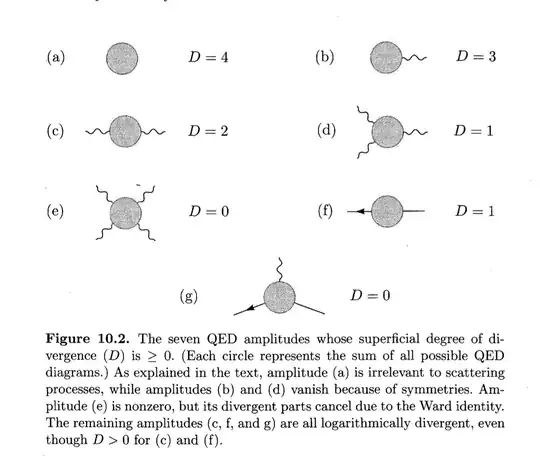What is the intuition behind superficial degree of divergence and why do we even use it at all, consider there are numerous exceptions involved if we use this concept?
1 Answers
The main point of superficial degree of (UV) divergence $D$ of a Feynman diagram is to help pin-point possible (UV) singularities.
Since every connected Feynman diagram is a tree of propagators and (amputated) 1PI vertices$^1$ [cf. e.g. this Phys.SE post], it is enough to study (amputated) 1PI Feynman diagrams.
E.g. for QED Peskin & Schroeder list 7 possible (amputated) 1PI vertex correlation functions with $D\geq 0$ in Fig 10.2:
This in turn helps organize the systematics of possible counterterms for the renormalization.
Further technical complications come from overlapping divergences and divergences of subgraphs.
For more information, see e.g. this & this related Phys.SE posts.
$^1$ We allow $n$-vertex correlation functions with any number $n\in\mathbb{N}_0$ of legs; including $n=0$ (vacuum bubbles), $n=1$ (tadpoles), and $n=2$ (self-energies).
- 220,844
